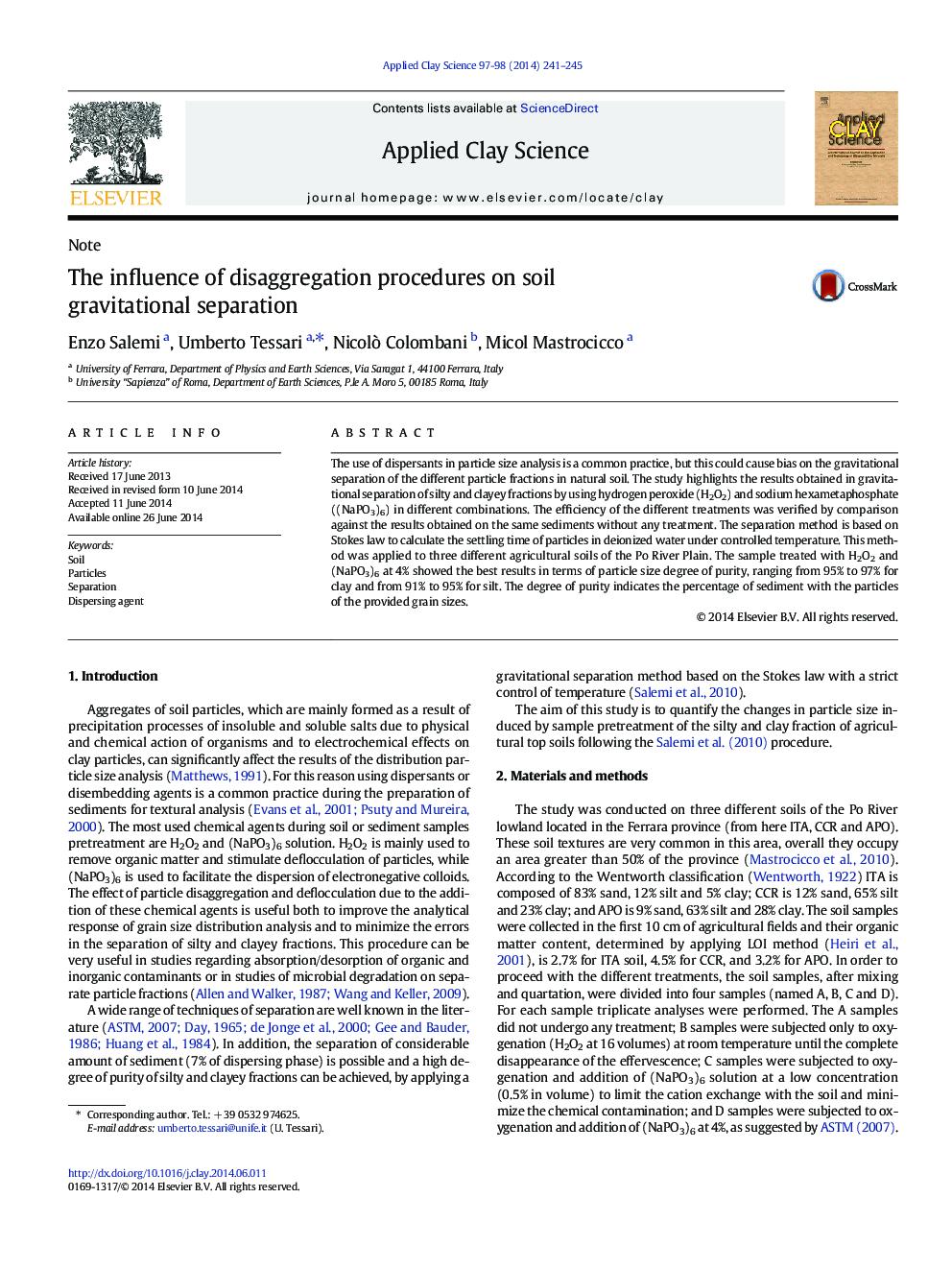| Article ID | Journal | Published Year | Pages | File Type |
|---|---|---|---|---|
| 1694678 | Applied Clay Science | 2014 | 5 Pages |
•Particle aggregates dispersion by using dispersants in different combinations.•Particle size degree of purity in gravitational separation method•The simple reaction with H2O2 does not affect the particle dispersion
The use of dispersants in particle size analysis is a common practice, but this could cause bias on the gravitational separation of the different particle fractions in natural soil. The study highlights the results obtained in gravitational separation of silty and clayey fractions by using hydrogen peroxide (H2O2) and sodium hexametaphosphate ((NaPO3)6) in different combinations. The efficiency of the different treatments was verified by comparison against the results obtained on the same sediments without any treatment. The separation method is based on Stokes law to calculate the settling time of particles in deionized water under controlled temperature. This method was applied to three different agricultural soils of the Po River Plain. The sample treated with H2O2 and (NaPO3)6 at 4% showed the best results in terms of particle size degree of purity, ranging from 95% to 97% for clay and from 91% to 95% for silt. The degree of purity indicates the percentage of sediment with the particles of the provided grain sizes.
